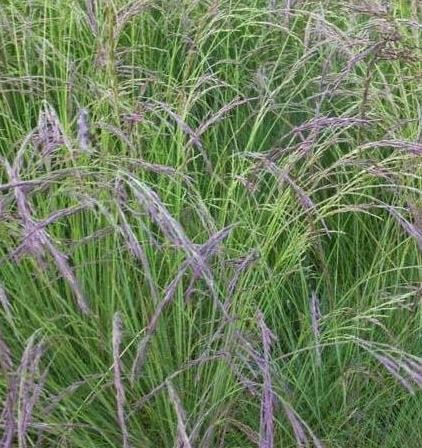Festuca vaginata
(Festuca vaginata)

Description
Festuca amethystina (Tufted fescue) is a species of true grass (Poaceae) native to Europe, including Turkey. Festuca (fescue) is a genus of flowering plants belonging to the grass family Poaceae (subfamily Pooideae). They are evergreen or herbaceous perennial tufted grasses with a height range of 10–200 cm (4–79 in) and a cosmopolitan distribution, occurring on every continent except Antarctica. The genus is closely related to ryegrass (Lolium), and recent evidence from phylogenetic studies using DNA sequencing of plant mitochondrial DNA shows that the genus lacks monophyly. As a result, plant taxonomists have moved several species, including the forage grasses tall fescue and meadow fescue, from the genus Festuca into the genus Lolium, or alternatively into the segregate genus Schedonorus. The inflorescences of species are open or contracted panicles, occasionally racemes, with one to two (rarely three) branches at their lower node. The branches are erect and begin to spread during anthesis, and occasionally lower branches are reflexed. The spikelets have two to twelve mostly bisexual florets. The rachillas are typically either scabrous or pubescent, but can occasionally be smooth and glabrous. The subequal or unequal glumes are ovate to lanceolate, acute to acuminate, and are typically exceeded by the florets. The lower glumes are as long or shorter than their adjacent lemmas and have one (rarely two or three) veins, and the upper glumes have three (rarely four or five) veins. The calli are typically glabrous and smooth, but can be occasionally scabrous or rarely pubescent. The chartaceous or sometimes coriaceous lemmas have somewhat dorsally rounded and distally keeled bases. The lemmas typically have five (rarely six or seven) veins. The lemmas have acute to attenuate apices that are occasionally doubly pointed, and terminal awns or mucros. The bidentate paleas are shorter to longer than the lemmas, with scabrous-ciliate veins. The regions between the veins are smooth and glabrous near the base of the paleas and become scabrous or puberulent distally. All grasses have three anthers. The ovaries are glabrous with occasionally hispidulous apices on which hairs persist when ovaries become caryopses. The oblong caryopses have adaxial grooves. The linear hila vary in length from half as long to as long as the caryopses.
Taxonomic tree:







